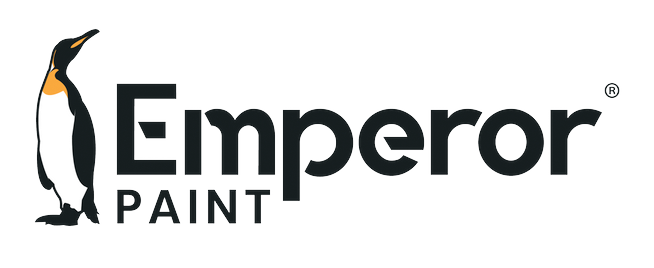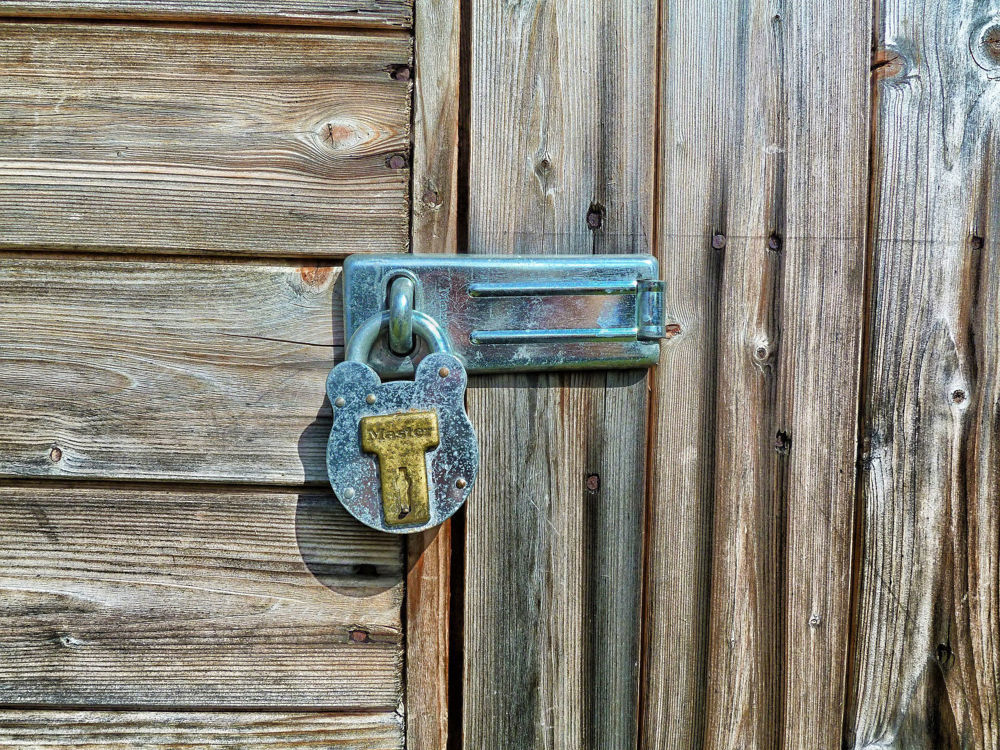
Ensuring any exterior surface is protected from the elements is crucial, but this is especially the case with outdoor wood like sheds, fencing, cladding & decking. With one of the most common areas that homeowners experience problems with moisture being sheds, we have put together this ultimate guide to shed protection and shed treatments so you can ensure your shed and its contents stays clean, dry and protected for years to come.
Why Is Shed Protection Important?
When you invest in outdoor garden furniture and buildings, ensuring they stay looking beautiful despite the weathering that they must endure here in the UK is a priority for many of us.
When it comes to exterior surfaces, keeping them protected is a constant battle, with them having to withstand high temperatures in summer and constant wetting in winter. Exterior surfaces, whether they be brick, concrete, stone or wood, are rarely resistant to weathering to start with. All of these are examples of mineral surfaces, which makes them porous. The more porous a surface, the more water it can absorb and hold. Due to this porosity, these surfaces can become saturated with water over time which can lead to a wide variety of problems.
Exterior wood in particular is highly porous, meaning it will uptake a large amount of water if left untreated. That is why whether you have a new wooden surface or one that has been left exposed to the elements, if you want to protect the wood from future damage, you must apply a protective treatment. While all mineral surfaces can experience problems when left exposed to weathering, wood is especially prone due to its high porosity, structure and the fact it is a natural material.
Weathering can impact wood in a number of ways, some which many of us are familiar with but also in ways that are less familiar to many. Firstly, when wood becomes saturated with moisture, this can cause the structural integrity of the wood to deteriorate. This can firstly happen through shrinking and swelling, when changes in the moisture content within the wood cause movement that can lead to the timber warping in shape. Secondly, wood can become damaged through rotting, which is caused by a fungus that eats away at the timber, causing it to lose strength. This fungus requires high moisture conditions, meaning the more saturated the wood becomes and the longer the timber is exposed to the moisture, the more likely wet rot is to cause damage.
Aside from damage to the wood, moisture also leads to discolouration and organic growth that can significantly impact the appearance of the timber. Organic growth such as mildew, algae and moss all thrive in high moisture environments. Once they take hold, it can be extremely difficult to prevent this growth and maintain the natural beauty of the wood. Discolouration such as 'silvering' also impacts the appearance of the wood, which is caused by UV rays that bleach the natural colour of the wood. If exterior wood is left untreated, this UV degradation will continue to discolour the timber over-time and contribute to it losing its aesthetic appeal.
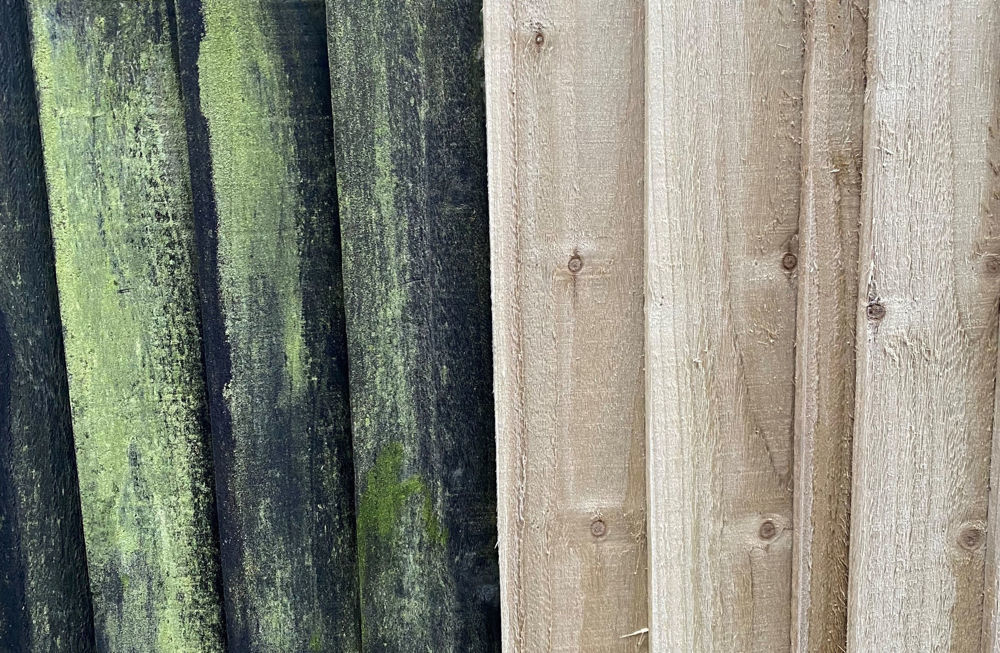
Applying a wood treatment to sheds any other exterior wood helps to protect the timber against all of the damaging effects that weathering can have, ensuring your shed stays dry and looking at its best. If you do not apply a wood treatment to your shed, whether it is a new shed or one that has been exposed to weathering, you run the risk of the life span of the timber being limited, potentially leading to damage over time.
What Shed Treatment Is Best For Protecting Sheds?
There are a seemingly endless amount of wood treatments available on the market, which makes finding the right product for you rather difficult. To find out which product suits you, it is first important to understand the difference between the various types of wood treatments. These include wood paint, wood stain, wood oil, wood waterproofer and wood preserver, which all vary in different ways.
COLOURED SHED TREATMENTS
If you want to change the colour of your shed, you have the choice between a wood paint and a wood stain. While a wood paint creates a solid, opaque coloured finish that completely covers the grain of the wood, a wood stain is a semi-transparent finish that colours to timber while still showing the grain of the wood. In terms of protection, wood paints and wood stains offer some level of protection. They do not offer complete waterproof protection as some moisture will be absorbed by the coating. Furthermore, due to the coloured nature of these treatments, they have to create a film on the surface of the wood which can lead to them becoming weathered long-term.
If you have a shed that has previously been painted or stained, you will have to use a similar treatment as clear shed treatments must generally be applied to bare, untreated wood.
CLEAR SHED TREATMENTS
If you want to maintain the natural beauty of your shed, there are a number of clear shed treatments available to you. These all vary in their formulation, however they all generally are designed to help protect exterior wood from weathering. The main types of clear shed treatments are wood oils, wood preservers and wood waterproofers.
Wood oils are designed to nourish bare, untreated wood and enhance the natural character of the wood. These oils are generally applied in 2-3 coats and are re-applied on an annual basis due to their tendency to weather off over time.
Wood preservers are generally oil-based products that offer deep penetrating protection to exterior wood against insects, algae and rot. They offer a level of water resistance, however they can have poor breathability due to their solvent-based formulation. These are generally applied in 2-3 coats and can sometimes be overcoated using a paint or stain.
Wood waterproofers are water-based treatments that are designed primarily to completely waterproof exterior timber. They create a water repellent surface on the wood that reduces water absorption, which reduces rotting, organic growth and discolouration. They are designed to chemically bond to exterior wood, giving the wood water repellent properties rather than forming a water repellent coating on the surface. They are applied in one-coat and once dry offer completely invisible protection to any exterior wood without changing its appearance.
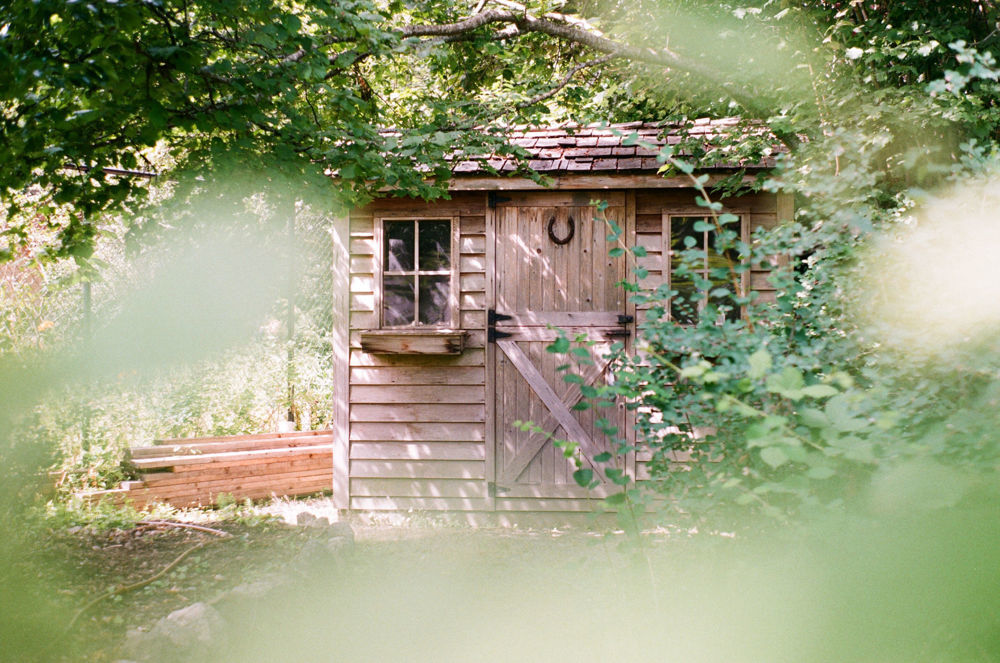
If you are looking to provide the highest possible level of protection for your shed, the best to way to do this is to apply a super hydrophobic treatment like Emperor Exterior Wood Waterproofer. A super hydrophobic treatment is a highly advanced technology that lines the pores of wood by chemically bonding. This means that water repels off the material, but water vapour can freely pass through these pores, making it highly breathable.
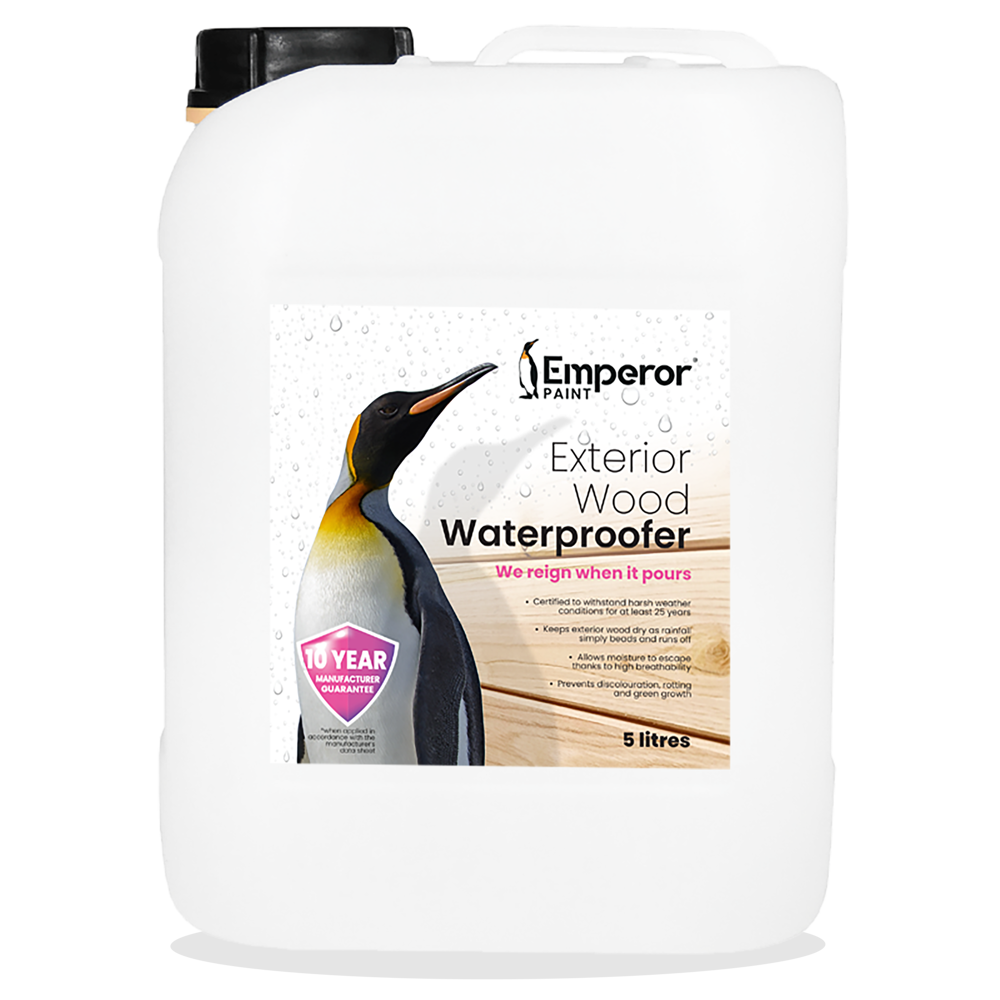
In contrast to other shed treatments, by chemically bonding to the wood it provides the timber with water repellent properties rather than forming a seal on the surface. This means that without a film to become weathered, it has an unrivalled durability in all weather conditions.
In a 25 year weathering test, it was found to perform just as effectively after 25 years of heavy weathering as when it was first applied, giving it a 25 year proven performance in harsh weather conditions. It also comes with a 10 year guarantee, ensuring its performance long-term. By keeping exterior wood dry, it discourages the growth of algae, lichens and mildew as well as reducing the risk of rotting, helping to protect wood from damage.
In order to protect exterior wood from UV degradation, the treatment is also UV resistant, preventing silvering caused by the bleaching of wood from sunlight.
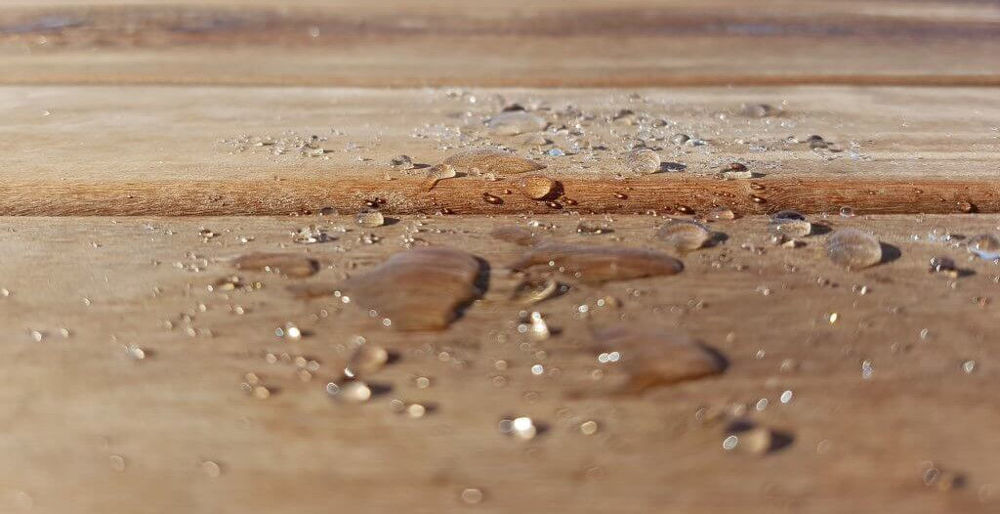
How To Apply Shed Treatments
YOU WILL NEED:
- Emperor Exterior Wood Waterproofer
- Paint brush, roller or pump-sprayer
- Dust sheet
- 180 grit sandpaper (may be required)
- Masking tape
- Exterior wood filler & filling knife (may be required)
1. PREPARATION
The most important part of applying a shed treatment is the preparation. If you do not prepare the surface properly before treating it, you will not only achieve a poor finish but you can also run the risk of the treatment not fully working. Taking time at this stage really can make all the difference!
Due to wood being an organic material, it will likely have a large amount of dirt and organic growth on the surface that must be removed. The best way to remove large-scale dirt is to use a power-washer. If you are treating wood that does not suffer from large amounts of dirt, hot soapy water and a soft brush will be sufficient. On weathered wood you can also use a 180-grit sandpaper to remove ingrained dirt from the timber, which helps to expose the natural beauty of the wood.
Applying a fungicidal cleaner kills any organic growth and is highly recommended if you are treating wood that has been left exposed for 12 months or longer. Apply Emperor Exterior Cleaner to the wood using a brush, roller or pump-sprayer and leave it to dry for 2 hours.
If your exterior timber has suffered from wet rot, it is likely that repairs will be required in order to restore the wood. Start by removing any crumbling and defective wood as this will simply break off further down the line. You can then use an exterior wood filler to repairs the timber. As the shed treatment is clear, you want to ensure that you use the correct shade of wood filler, as this will create a seamless finish between the wood and the repair.
Finally, protect any surrounding surfaces by putting a dust sheet down on the floor and masking any other areas, such as windows. While the shed treatment is water-based and can be cleaned using water, this will make the clean-up process much easier and reduces any problems associated with overspray.
2. APPLYING SHED TREATMENT
Before you apply anything to the wood, you must ensure that the timber is completely dry. If the wood is saturated with moisture, this can prevent the treatment from absorbing into the material. It is also important to check the weather before application to ensure there will be no sudden showers and you will have sufficient time to allow the treatment to dry after applying.
The treatment can be applied using a hand-pump sprayer, brush or roller, so it is up to you how you apply it. The treatment comes in a clear liquid and only requires one-coat applied at 5m2 per litre. Once applied, simply leave this to dry for 1 hour at 20°C. The full beading effect of the wood treatment will be visible once it has cured, which may take a number of days, so be patient. In this time, the wood will still be fully waterproof and protected after it is touch dry. Once applied, you not only will not have to apply another coat, you will not have to re-apply the treatment for in excess of 25 years, leaving the shed maintenance free.
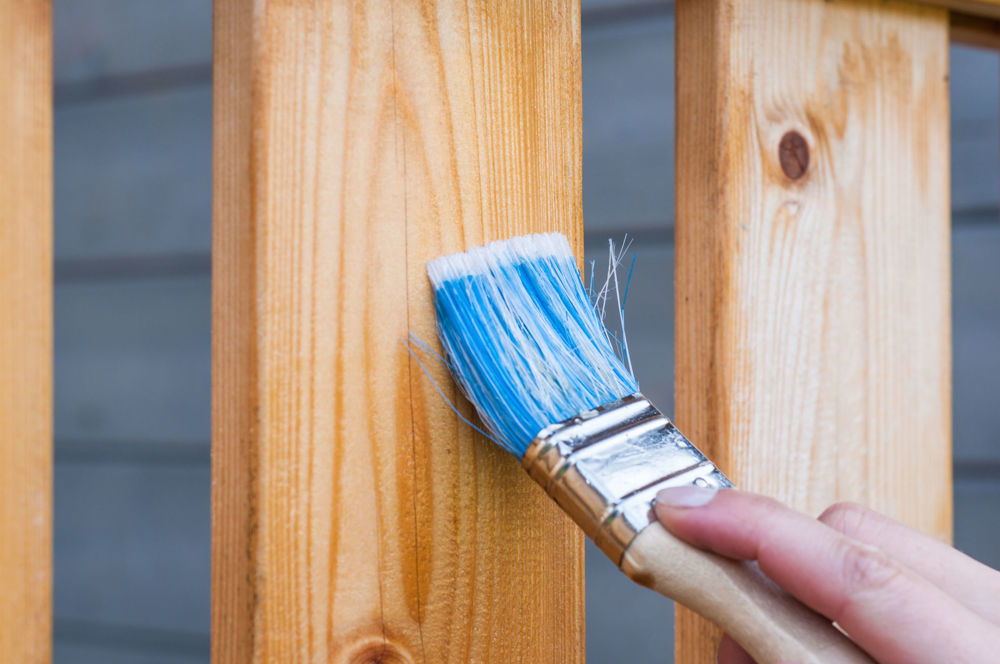
Frequently Asked Questions
Q. IS EMPEROR WOOD WATERPROOFER SUITABLE FOR NEW OR WEATHERED WOOD?
The easiest way to treat rotting wood is to prevent it in the first place, however protecting weathered wood from further rot is crucial to prevent damage. Whether you are treating new or previously weathered wood, by reducing the risk of water ingress you help to reduce the damage it can experience and help to extend its lifespan.
Q. CAN I APPLY A WOOD WATERPROOFER BEFORE PAINTING?
Any penetrative wood treatment must be able to absorb into the wood. This includes wood oils, wood waxes and wood waterproofers. Some shed treatments are designed to be applied to the wood and then overcoated using a wood paint or wood stain, however you must check with the product you are using to see whether it is designed to be overcoated. This also means that if you are looking to treat a previously painted shed, you must ensure you remove this paint as it will prevent the treatment from absorbing into the timber.
If your shed has been previously coated using a coloured paint or stain, the easiest option would be to re-applying a similar treatment to the shed, as waterproofing treatments are designed for bare, unpainted timber.
Q. WHAT IS THE DIFFERENCE BETWEEN WATER-BASED AND OIL-BASED SHED TREATMENTS?
When looking for shed treatments, you will come across the terms 'water-based' and 'oil-based' regularly. This refers to the composition of the product, with water-based products using a water-borne solvent while oil-based products have a significantly higher level of organic solvents.
There are a wide range of differences between water-based and oil-based products that have an impact on how a product is applied and how it will perform. A water-based product will dry in 1-2 hours, does not come with an unpleasant smell, is low in VOC's and is generally better for the environment, while an oil-based product can take anywhere from 3-8 hours to dry, can come with an unpleasant smell, has high levels of VOC's and due to their environment impact is consistently subject to new regulations to reduce their impact.
We hope we have answered any questions you may have had regarding shed protection using shed treatments and how to best apply them. If you have any other questions, feel free to get in touch with our team of experts who are on hand to assist you. Contact them today by emailing info@emperorpaint.co.uk or calling them on 0161 509 9009. Alternatively, shop Emperor Exterior Wood Waterproofer and get FREE delivery on all orders.

